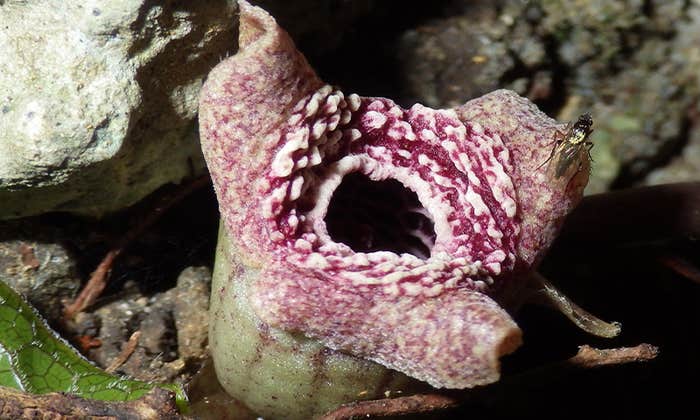Fame is something that sticks to someone or something, a quality earned or gained for no reason at all. It is also a force of connection. A famous person or thing forms a hub in a network that binds us all. Genes can also be famous, stars in the parade of the animal kingdom.
So what genes are the Beatles of DNA? Genes so famous they unite species across the globe? Given there are 8 million or 100 million probable species on earth—depending on who you ask—it was no easy task to select the Fab Four. But after asking some of the world’s top biologists1, we settled on our John, Paul, George, and Ringo, known as TP53, CYP51, TAS1R2/TAS1R3, and opsins. Each (described below), over eons, has been critical to the development and health of living creatures.
Click on the buttons below to learn which species share the critical genes. Our graphic is an illustration of life’s common bonds, the points where humans, animals, and plants come together.

TP53: Somatic Cell Protection
Cell duplication is a fact of life for all multicellular species, but things can go wrong during the process. Environmental stressors like chemicals and radiation can damage DNA, the code that cells utilize to replicate themselves. The TP53 gene codes for the p53 protein—nicknamed the “guardian of the genome”—which ensures duplicating cells faithfully reproduce exact copies of themselves. If the DNA of a cell is damaged, p53’s first response is to trigger the repair networks that will maintain the integrity of the genome. But in the face of irreparable damage, it will initiate the cell’s death, or apoptosis. Without a guardian like p53, the proliferation of defective cell copies can result in tumors, or other life-endangering situations. Some researchers suggest the evolution of TP53 goes back about a billion years, which means a great number of multicellular organisms utilized this gene as a tool to manage increasing cellular complexity.
CYP51: Synthesis of Cholesterol
The CYP51 gene exists in all vertebrates, as well as in some plants, fungi, and even various bacterial species. It codes for a protein that plays a small but important role in the synthesis of cholesterol (or ergosterol in fungi and sitosterol in plants), a molecule that helps cell membranes remain fluid and functional. The protein’s sole task is to remove a methyl group (a carbon attached to three hydrogens) during the complex and long process of cholesterol production. When the CYP51 protein removes the methyl group, it changes the shape of the cholesterol precursor molecule, making it just the right fit for a cell’s membrane.
TAS1R2/TAS1R3: Sense of Sweet
Although humans enjoy many a frivolous sweet thing—from cupcakes to ice cream—in fact the detection of sweet is essential for the survival of those creatures, like the giant panda, that require sweets, or energy-supplying carbohydrates, in their system. The TAS1R2 and the TAS1R3 genes code for two proteins that fit together in such a way to attach to a particular “sweet” molecule. Many organisms, such as elephants and chickens, might just have one gene or the other, but only having both of them will make it sweet.
Opsin Genes: Light Detection and Photoreception
Opsin genes code for proteins that embed themselves in the membrane of photoreceptor cells at the back of the eye cup. When the opsin protein is attached to an organic chemical called a chromofore, or retinol, or just plain Vitamin A, it becomes part of a pathway for detecting light. When light hits the chromofore, the chemical changes shape. This shape change causes the opsin protein to in turn change shape, setting off a cascade of reactions within the cell that lead to an organism’s perception of light. But though only a portion of all species possess the requisite brain power to create images from this information, many less complex creatures still have the ability to detect light, and like the box jellyfish, can use it as a navigational guide or a sensor detecting the presence of both predator and prey.
1. References
Vladimir Belyi, Assistant Professor, Rutgers Cancer Institute of New Jersey
Paul Breslin, Professor, Rutgers
Kelly Frazer, Professor, University of California, San Diego
Jed Goldstone, Research Specialist, Woods Hole Oceanographic Institution
Peihua Jiang, Researcher, Monell Center
Trevor Lamb, Professor, Australian National University
Arnold Levine, Professor Emeritus, Institute for Advanced Study
David Nelson, Associate Professor, The University of Tennessee
Kelly O’Quin, Assistant Professor, St. Bonaventure University
David Plachetzki, Postdoctoral fellow, University of California, Davis
Thomas Sakmar, Senior Physician and Professor, The Rockefeller University
Thierry Soussi, Professor, Université Pierre et Marie Curie and Karolinska Institutet
John Stegeman, Senior Scientist, Woods Hole Oceanographic Institution
Shozo Yokoyama, Professor, Emory University


























